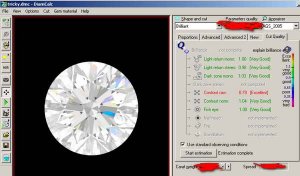adamasgem
Brilliant_Rock
- Joined
- May 23, 2003
- Messages
- 1,338
Storm, You are entirely correct that the Gold confidence level probably falls much below that of the Platinum, how much I don''t know, everyone''s opinions are purely guesses on that statistic to this point, and maybe it is only 50%, but that would still put GIA''s below that, in my opinion.Date: 10/24/2008 5:24:44 PM
Author: strmrdr
Therefore its confidence level is less than half of a 3d system.
And I''m glad to see you talking about CONFIDENCE levels, because that is what it is all about, confidence in the grade assigned. I only hope that the Gold and Platinum analogies are understood by the consumer, and that people have to be educated about the limitations of systems based on averages, besides the fact they are two different systems.
I think there may have been a mistake somehow in using the same terminology, but I don''t think there were obvious choices, maybe HIGH TOP, LOW TOP, HIGH MIDDLE, LOW MIDDLE, HIGH BOTTOM, LOW BOTTOM, but that may not be politically palatable, nor saleable, so Gold and Platinum may have been the logical conclusion.
Maybe if there were no Gold Ideal range, it would solve the terminology problem confusion.
Maybe High EX is the solution. Everyone looks for superlatives.





300x240.png)